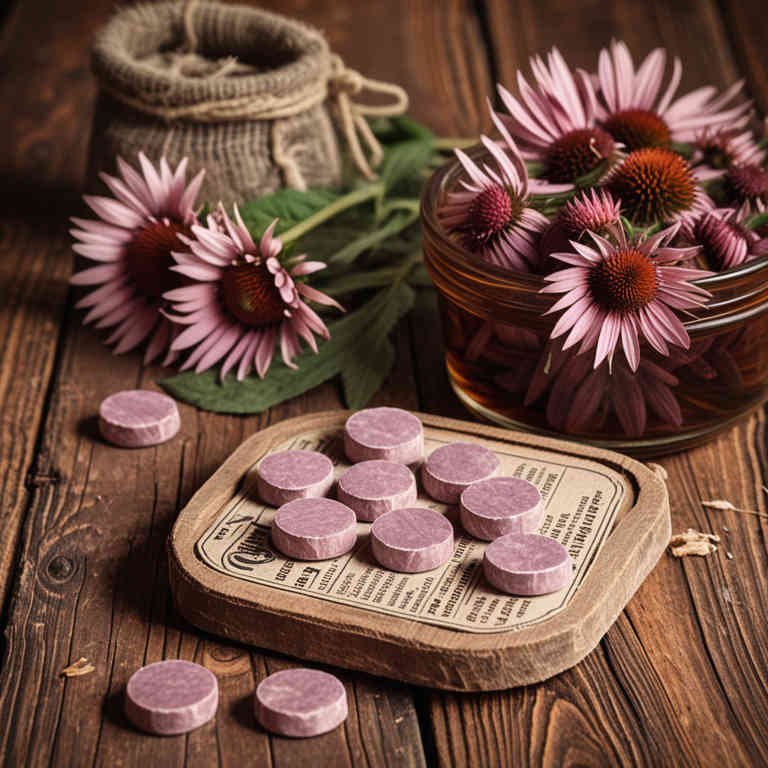Echinacea purpurea lozenge for medicinal use

Echinacea purpurea lozenge is a herbal preparation made from the dried roots and leaves of the Echinacea purpurea plant, commonly known as purple coneflower.
It is used in herbalism to support the immune system and is often taken to help reduce the duration and severity of colds and respiratory infections. The lozenge form allows for easy consumption and can provide localized relief for sore throats and other minor respiratory discomforts. It is typically made by extracting the active compounds from the plant material and combining them with a sweetener and a binding agent.
Echinacea purpurea lozenge is a popular natural remedy in both traditional and modern herbal practices.
Uses
Echinacea purpurea lozenge has been used to support immune function and alleviate symptoms of colds and respiratory infections.
Historically, Native American tribes used echinacea to treat wounds, infections, and sore throats, recognizing its potent anti-inflammatory and antimicrobial properties. Traditionally, it was prepared as a tea or tincture, but modern formulations now include lozenges for easier consumption and targeted relief. Today, echinacea lozenges are widely used as a natural remedy to reduce the duration and severity of colds.
Scientific studies suggest that echinacea may stimulate the immune system, though results can vary depending on the specific species and preparation method.
Benefits
Echinacea purpurea lozenge has health benefits such as boosting the immune system and reducing the duration of cold symptoms.
It is commonly used to support the body's natural defenses against viral infections. The lozenge form allows for easy consumption and may help soothe sore throats. Some studies suggest it may reduce the frequency and severity of respiratory infections.
However, results can vary, and it is advisable to consult a healthcare professional before use.
Constituents
Echinacea purpurea lozenge active constituents include alkamides, caffeic acid derivatives, polysaccharides, and flavonoids.
These compounds are believed to support immune function by stimulating the production of white blood cells and enhancing the body's response to infections. Alkamides are thought to modulate the immune system, while polysaccharides may have antimicrobial properties. Caffeic acid derivatives contribute to the plant's anti-inflammatory and antioxidant effects.
Flavonoids help protect cells from oxidative stress and may support overall immune health.
Preparation
To make Echinacea purpurea lozenge, first, gather fresh or dried Echinacea purpurea leaves and flowers.
Next, grind them into a fine powder and mix with a small amount of honey or a sweetener of your choice. Then, add a binding agent such as cornstarch or gum arabic to help form the lozenge. Shape the mixture into small tablets or use a lozenge mold.
Finally, allow the lozenges to dry completely in a cool, dark place before storing them in an airtight container.
Side Effects
Echinacea purpurea lozenge may lead to gastrointestinal discomfort, including nausea, vomiting, and diarrhea, in some individuals.
It can also cause allergic reactions, particularly in people with a history of allergies to plants in the daisy family. Some users may experience skin rashes or hives as a result of using this preparation. In rare cases, it may interfere with the immune system, potentially worsening conditions like autoimmune disorders.
It is important to consult a healthcare provider before use, especially for those with chronic illnesses or taking other medications.